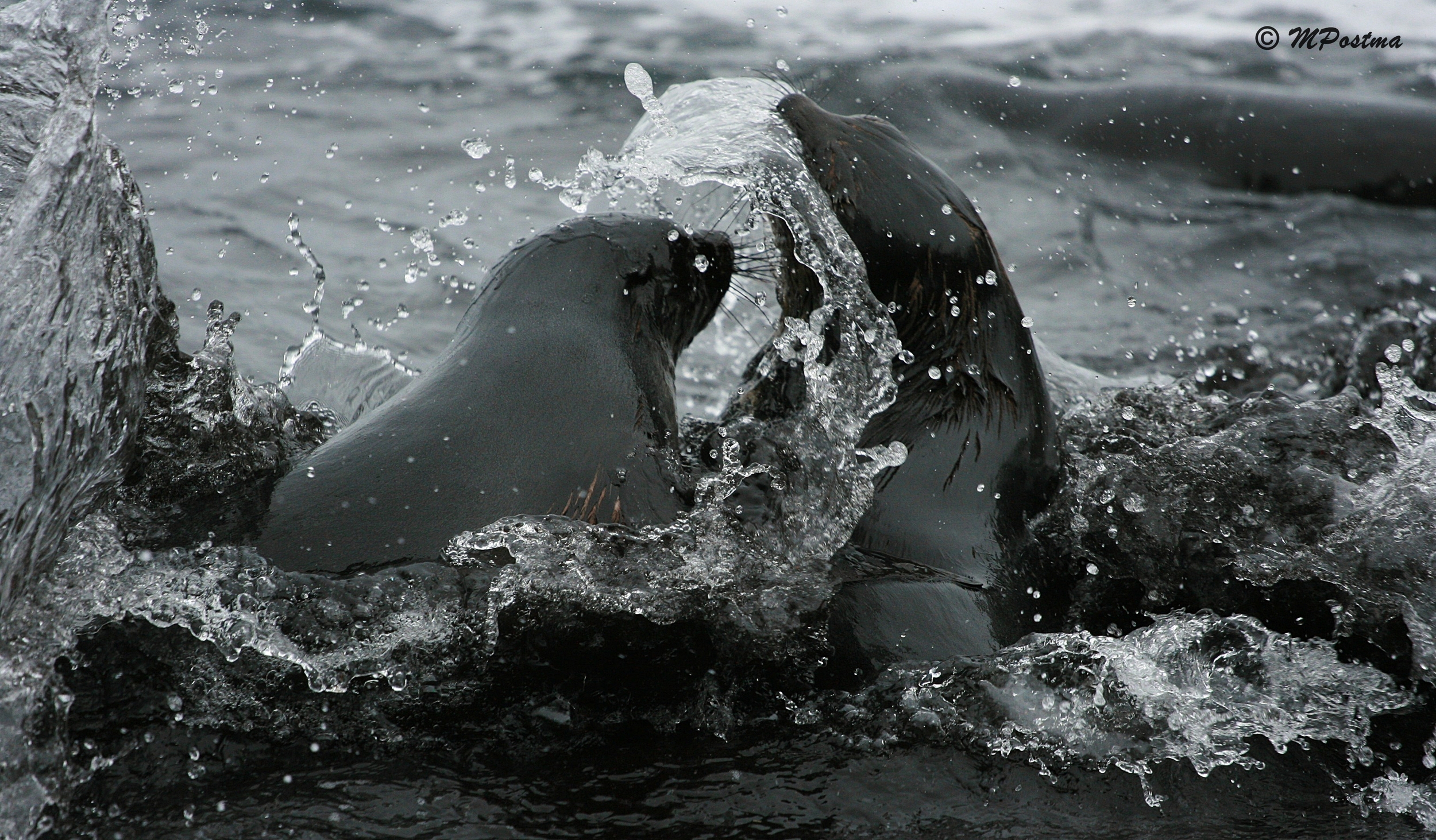Fur seal research activities
The Prince Edward Islands boast the world’s largest sympatrically breeding population of Antarctic (Arctocephalus gazella) and Subantarctic fur seals (Arctocephalus tropicalis). In 1952, when leading light scientist Bob Rand conducted the first survey of fur seals at Marion Island, only a few Subantarctic fur seals and a white-washed Antarctic fur seal skull (to confirm their former occurrence) were found, the small numbers was a result of the preceding era of ‘sealing’. Marion Island did not escape the 19th century worldwide seal slaughter and the two fur seal population were severely exploited at the hands of sealers for their commercially valuable underfur.
The populations of both fur seal species have recovered remarkably well and regular population censuses have allowed us to quantify this recovery. At Marion Island both populations increased exponentially, ostensibly following the classical S-shaped curve typical of recolonisation. Whereas the Subantarctic fur seal population increased intrinsically, with some individuals emigrating, the Antarctic fur seal population was augmented by immigrants. These immigrants probably travelled from the Scotia Arc islands with at least one of them arriving from South Georgia.
Initial research on fur seal behaviour was augmented by a detailed comparison of the seasonal haulout patterns, their vocalisations and cranial morphometrics of the two fur seal species. Thereafter followed the first comprehensive determination of fur seal pup growth from birth to weaning, the establishment of median pupping dates which differed substantially for the two species, and the attendance patterns of lactating females during summer. Analysing diet from scats, by retrieving the remaining hard parts that are specific of prey, commenced on a monthly basis in 1989 and is ongoing. This set the baseline for future comparisons of median birth date and of female attendance patterns and the resulting pup growth.
Today, the majority of the fur seal work on Marion Island relates indices of food availability to global climate patterns, environmental change and ocean condition. As apex predators and income breeders, fur seals are ideally suited for this scientific approach, and they provide a quantifiable index of prey abundance and environmental condition in an area spanning hundreds of square kilometres around the Prince Edward Islands. This involves satellite tracking and measuring the diving behaviour of lactating females throughout various stages of lactation, estimations of pup growth, survival, diet and breeding phenology.
Below is a short description of each species and the basic differences in their biology.
The Subantarctic fur seal
(Arctocephalus tropicalis)
One of the most widespread species of the Arctocephalus genus, the Subantarctic fur seal, has breeding populations on the islands of Marion, Prince Edward, Tristan da Cunha, Saint Paul, Amsterdam, Crozet, Macquarie and lastly Gough Island. Gough Island is home to the world's largest breeding population of this species, although Marion Island hosts the largest sympatric populations of these and Antarctic fur seals.
Females give birth to single pups over a six week period centered around 17 December on Marion Island. Within 6-10 days of giving birth, females undergo a post-partum oestrus lasting about 1 day. Similar to other otariids (eared seals), both Antarctic and Subantarctic fur seals experience delayed implantation of the blastocyst on the uterine wall until March/April, approximately 3-5 months after mating. Gestation lasts 360 days and lactation last c. 300 days and pups wean around 13 October on Marion Island. The adult male, with its distinctive mohawk hairstyle and cream coloured chest, weighs in at around 88 kg and an adult female on average weighs 34 kg. Pups weigh about 4 kg at birth but grow rapidly and mass reaches an average peak at 200 days of age of 13 kg (females) and 15 kg (males).
The Antarctic fur seal
(Arctocephalus gazella)
Most Antarctic fur seal Arctocephalus gazella populations became extinct during the nineteenth and early twentieth centuries due to uncontrolled hunting. The species has since experienced a strong recovery, re-colonising many of its former breeding sites. At the Prince Edward Islands the population recovery has been rapid especially in the last decade.
Apart from being the largest population of Antarctic fur seals north of the Antarctic Polar Front, Marion Island’s Antarctic fur seal population is unique and fascinating in various other respects. During early spring, a band of Antarctic fur seal males (affectionately known as the “Bad Boys Club”) at Goodhope beach on the south coast of the Island develop a taste for penguin meat. Penguin eating fur seals are not uncommon though, as it is known that they supplement their diet with small penguin species. Marion Island, however, is the only location in the world where fur seals pursue and kill penguins as large as king penguins, on land. The contest is by no means a one sided affair however and is potentially dangerous to seals too. The loss of an eye by a well aimed peck, or a broken nose resulting from a flipper beating by these powerful birds may result in a drawn out demise for the now handicapped seal.
Bizarre, unique sexual behaviour of Antarctic fur seals.....
Goodhope beach is, however, not the only stage for this dramatic behaviour and it has been observed elsewhere on the island. It was believed that this killing behaviour sparked a bizarre event witnessed in December 2006 at a low density fur seal haul-out area on the east coast when a young adult male Antarctic fur seal sexually assaulted a king penguin. This fascinating incident was documented in an article in the May 2008 issue of the Journal of Ethology and went viral in the global media, initially reported by the BBC. Bizarrely, this behaviour has been noted again in recent years challenging our earlier hypothesis as to the causes and may be indicative of an emergent learned behaviour in young males of the species at this island. The latest observations have been published (along with video footage) in the journal Polar Biology. Have a look at the BBC, Mirror, DailyMail, Smithsonian and various other media outlets for coverage of this.
















